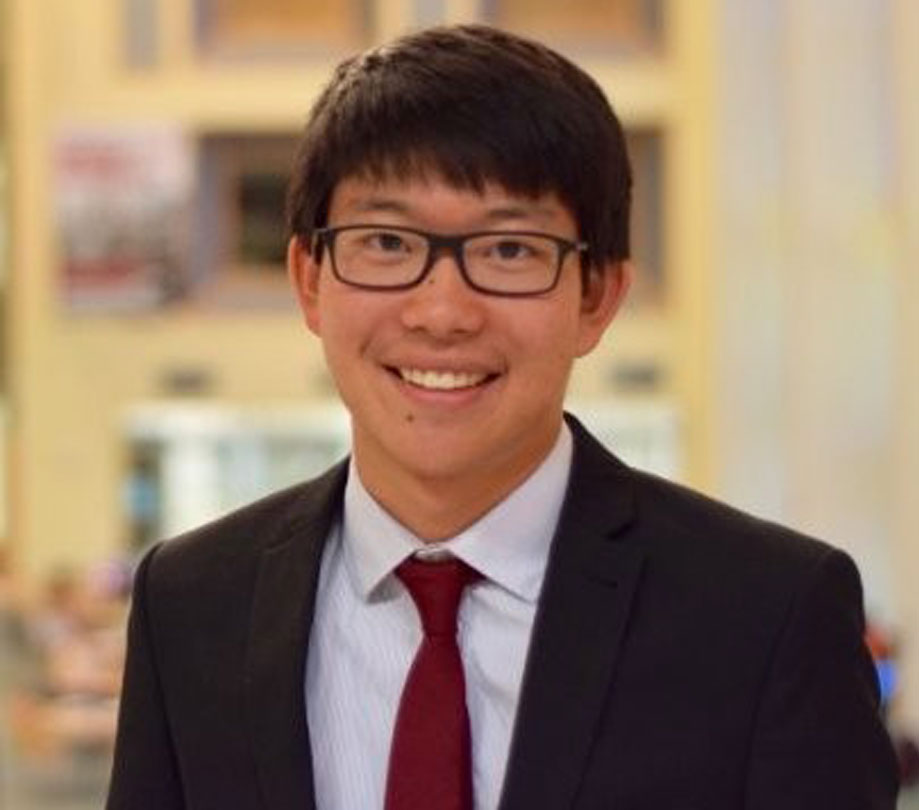Blockchain
Decentralized technologies solve Illiquidity problems
Tuesday, December 17, 2019

|
Richard Harris |

We recently sat down with Phillip to gain an insight into how blockchain technology is removing the friction related to creating and marketing new asset classes, and how developers can make use of AVA's platform for their own projects.
Illiquidity is one of the major factors affecting global financial markets. Digitizing new assets and finding corresponding buyers and sellers is difficult and costly. Much has been said about the potential for decentralized technologies to solve these problems, but current offerings fundamentally lack the necessary performance guarantees, feature set, and architectural design to do this effectively, something that Phillip Liu, Head of Strategy and Operations for AVA Labs is acutely aware of.
AVA Labs is a new project focused on building a platform - an “Internet of Active Assets” - that will solve these issues once and for all. Ultimately, AVA is creating a platform where clients can create compliant and secure networks for their own specific needs, thereby simplifying the process of creating, discovering, and trading existing and new types of assets. Co-founded by preeminent blockchain authority and Cornell professor Emin Gün Sirer, and seasoned software engineer Kevin Sekniqi, AVA Labs envisions a future where countless new markets for new types of assets are all accessible on one unified platform that serves the complex needs of international markets spanning multiple jurisdictions.
We recently sat down with Phillip to gain an insight into how blockchain technology is removing the friction related to creating and marketing new asset classes, and how developers can make use of AVA's platform for their own projects.
ADM: Tell us a bit about your background. How did you become involved in the blockchain sector?
Liu: Prior to AVA, I was a tech investor at JLAB, the blockchain and crypto arm of JD Capital, one of the largest private equity funds in China that managed over $5 Billion in assets. My role at JLAB consisted of sourcing, investing and supporting new technologies, products, and companies in the blockchain space. I dabbled in the blockchain space starting in 2013 and continued to follow some of the research and technology developments ever since then.
I was extremely lucky to have done my undergraduate at Cornell, where most of the cutting edge blockchain-related research was happening. After I left Cornell, I knew that I wanted to continue my involvement in blockchain and crypto. Having a background in economics and finance and also having a solid understanding of computer science, I wanted to use my expertise to push the space forward. Investing in good technology and companies was naturally interesting and meaningful to me.
I joined AVA Labs after speaking with Professor Emin Gün Sirer about the Avalanche protocol. I was initially intrigued by the underlying protocol as it was some of the best work I had ever seen at that point. I also really liked the team and vision so I decided to join full time. I am currently leading strategy and operations but, honestly, we operate in such a lean manner that I am always working on a little bit of everything.
ADM: Can you give us an introduction to AVA Labs?
Liu: You might have heard about the Avalanche consensus protocol that delivers higher throughput, lower confirmation times and can scale to tens of thousands of nodes. It's truly a protocol that offers unparalleled user experience for developers and users in general. We are at the point of finishing the underlying infrastructure, however, we believe our journey has just begun.
At the core, we are building a new infrastructure for decentralized applications, payments and a new concept that we call the “Internet of Assets”. AVA is a platform that can cater to any type of application imaginable, however, as a team, we only have limited resources and time to tackle a few verticals. So for AVA Labs, our vision is a platform for finance that consolidates siloed markets into one global ecosystem: the “Internet of Assets”. The platform provides the tools and platform to users, allowing them to create compliant and secure networks for their own specific needs, thereby simplifying the process of creating, discovering, and trading existing and new types of assets. AVA holds the potential to create markets for new types of assets, all accessible on one unified platform that serves the complex needs of international markets spanning multiple jurisdictions. We’re starting to speak with potential users ranging from asset management companies who manage billions of dollars to Defi developers who are simply looking for a better platform to build on. I’m really excited about the potential that our platform can enable!
ADM: Can you tell us about AVA Labs’ team?
Liu: It’s hard to name everyone, but of course, there is our co-founder and CEO, Prof. Emin Gün Sirer. For those who are unfamiliar with this work, he is a veteran of the blockchain space, having written one of the most famous academic papers in our space called “Majority is not Enough: Bitcoin Mining is Vulnerable” which introduced the concept of “selfish mining” and demonstrated an attack on Bitcoin that only required around ⅓ hash power. Prof. Sirer proposed some really cool technologies to solve the scalability of blockchains like Bitcoin-NG, as well as security solutions like Covenants and Vaults. Fun fact, he actually proposed a proof-of-work currency called Karma in 2002!
Our second co-founder is Kevin Sekniqi. Kevin, like Prof. Sirer, has been in the space since the early days. Fun fact, he ran one of the very first mining nodes of BTC. Overall, I would describe Kevin as a jack of all trades... and all a master of all of them. Back when he was in Albania, he competed in competitive math competitions and placed top in the country. He studied cryptography during his undergrad, but focused on distributed systems and consensus during his Ph.D. at Cornell, and even started an AI startup! Some might describe Kevin as a brilliant mathematician and computer scientist, however, he is super passionate and relentless about building products and is obsessive about product-market-fit. I would describe him as a very level headed guy who is really hardworking (literally comes to the office 7 days a week), super persistent and passionate about everything he does and never gives up.
Our last co-founder is Ted Yin. Ted’s background is pretty interesting. He knows quite a bit about the theoretical principles surrounding consensus protocols, but for the most part, he's a builder and a fantastic software engineer. It’s actually really, really hard to implement a consensus protocol that is correct and secure, and not that many people in the world that can do it. There's often a disconnect between theoretical research, writing elegant mathematical proofs and well-structured papers, and practice, actually writing the code, in distributed systems, and folks who can bridge the two worlds are very rare. Their work is usually the most impactful because of their unique expertise. Ted's one of these guys and we are extremely lucky to have him on the team. In addition to his work at AVA, Ted was also the first author of the HotStuff protocol paper. Facebook Libra ended up using Hotstuff consensus as a foundation for their platform!
ADM: What major problem is AVA Labs trying to solve?
Liu: The issues we are trying to solve are two-fold.
We sold a fault-tolerant and decentralized dream to the community but none of the existing blockchain platforms delivered. Our platform can solve most of the biggest issues plaguing the space today such as lack of performance, centralization and usability issues.
Blockchain platforms are supposed to be solutions that remove intermediaries and enable users to control their financial future. Blockchain assets allow users to "be their own bank". With higher transaction speeds and performance, we can enable extremely quick value transfer. However, what about assets and use cases outside of just digital currency? Illiquidity is one of the major factors affecting global financial markets, and digitizing new assets and finding corresponding buyers and sellers is difficult and incredibly costly. Although there is a lot of discussion about how decentralized technologies can solve these problems, the current offerings fundamentally lack the necessary performance guarantees, feature set, and architectural design to do this effectively.
AVA addresses this issue by simplifying the creation, discovery, and trading of existing and new types of assets. AVA bridges permissionless and permissioned platforms and, allowing users to leverage the network for their own specific needs. We enable developers to easily support different types of virtual machines and scripting languages and the creation of feature-specific subnetworks. The AVA Platform also enables third-party token issuers to interact in one unified platform, thus lowering costs of transfer and settlement and making the user experience extremely seamless.
ADM: Who do you envision as your primary user/customer base?
Liu: AVA appeals to a diverse audience. For our initial financial use cases, our user base will consist of people who are interested in new financial products that are available to them through our platform.
But at the end of the day, we aim to reach a wide user base, ranging from developers to companies exploring the potential of blockchain. I personally see our platform as game-changing for those in third-world countries who do not have access to financial products that we have in developed countries. A bunch of cool ideas that did not take off such as blockchain-based identity and decentralized autonomous organizations, to name just a few, can be retried with stronger, more principled teams and a platform that can support these use cases. We hope that AVA and our community will help the industry move forward and encourage the development of other meaningful projects.
ADM: What have been the main challenges that you’ve encountered to date?
Liu: I just recently read about the Chinese Government crackdown on scams and unregulated token issuances. A big challenge of ours has been navigating the uncertain regulatory environment. I agree with the sentiment and the space needs to be cleaned up. Ultimately, our goal at AVA Labs is to continue providing legitimacy to the space, while propelling the industry forward. I think level headed and sensible regulation will be an essential element in this growth, and we as an industry need to convince the regulators all over the globe that distributed ledger technology is useful and solving real problems.
ADM: What is AVA Labs doing to solve the scalability issues that have plagued other networks such as Ethereum?
Liu: So when you say scalability here, I hear two things, 1. scalability related to throughput, aka how to do we process more transactions in the network and 2. Scalability is related to how many nodes or participants in the network we can scale up to without a significant reduction in overall performance.
Avalanche consensus is the first family of protocols that we know of that fixes and addresses both of these issues, without any additional tricks and unneeded computation. Nakamoto consensus, mainly the proof of work-based protocols, are pretty terrible. They are slow, waste a ton of energy doing computations that aren’t contributing directly to validating transactions, and aren’t even that decentralized. Last we checked, there were 9 mining pools in Bitcoin and 34 mining pools in Ethereum that controlled over 99% of the hash power, far from a decentralized cryptocurrency network. Now there is a shift towards new consensus protocols, however, none of them are really that new as many are based on Classical consensus protocols.
Classical consensus protocols, are pretty fast when you have only a small number of nodes or validators in the network. But the problem with these protocols is that these protocols require all-to-all communication. Unfortunately, you can't scale to a lot of nodes without significantly slowing down the number of decisions or transactions that can be processed in the network. So what you end up with are systems which you need to elect a committee, like in delegated proof of stake or using some sort of new cryptography like Algorand. Our goal with Avalanche is to allow everyone to participate as a node in the network.
Avalanche solves then issues buying using randomized subsampling in the network. Every node only needs to sample a very small number of nodes regardless of how many nodes in total are in the network. We can take advantage of well-known gossip protocols to make sure the network knows about transactions in very few numbers of steps and the network can come to consensus very quickly. We’ve been able to achieve above 5000 transactions per second and our transactions confirm within 1-2 seconds, and this was running on a network with 1000+ nodes geo-distributed around the whole world.
ADM: What’s coming up in the next few months for the project?
Liu: This is a busy time for us as we are currently approaching our public testnet and gearing up for our mainnet launch. In addition, we plan to release our go-to-market plans soon, which in my view, is really exciting since we hope to solve some of the issues with previous token launches that came before us. Stay tuned for more information in the coming weeks and months on our website, Twitter, and Telegram.

About Phillip Liu, Head of Strategy & Operations, AVA Labs
Phillip Liu is Head of Strategy & Operations at AVA Labs, whose mission is to build a payments rail and computation engine based on the breakthrough Avalanche family of consensus protocols.
Previously, Phillip worked as an Investment Manager at JLAB, the blockchain investment arm of JD Capital, one of the largest private equity groups in China, with $5 billion in assets under management. Phillip previously held roles in Strategy Consulting at Accenture and a fintech consulting firm.
He holds a Bachelor’s Degree in Applied Economics from Cornell University.

Become a subscriber of App Developer Magazine for just $5.99 a month and take advantage of all these perks.
MEMBERS GET ACCESS TO
- - Exclusive content from leaders in the industry
- - Q&A articles from industry leaders
- - Tips and tricks from the most successful developers weekly
- - Monthly issues, including all 90+ back-issues since 2012
- - Event discounts and early-bird signups
- - Gain insight from top achievers in the app store
- - Learn what tools to use, what SDK's to use, and more
Subscribe here












Comments